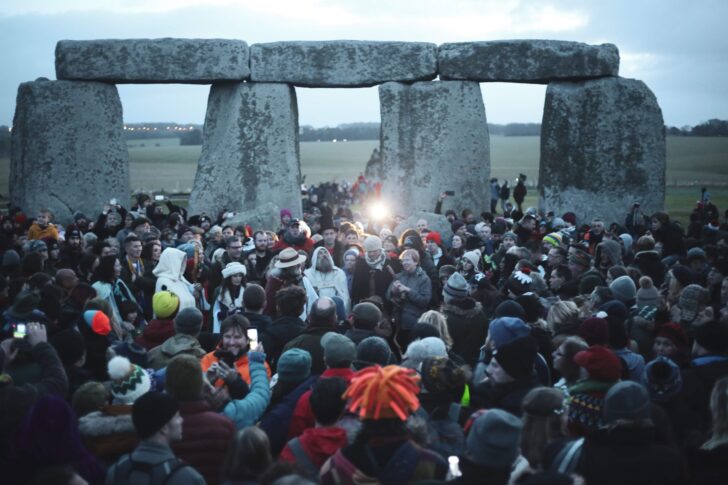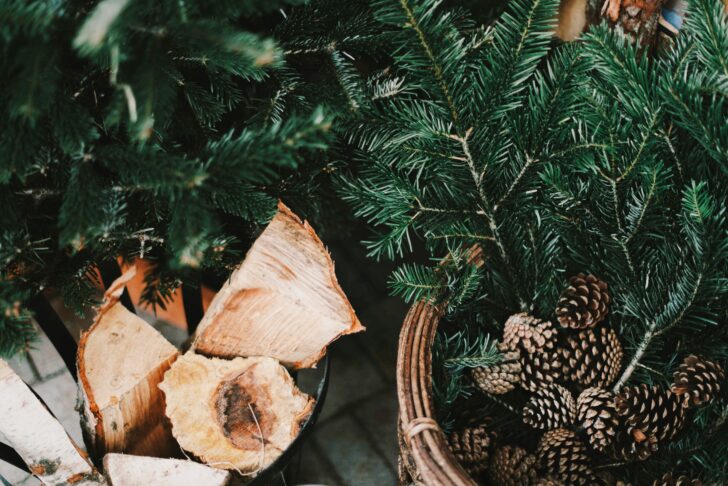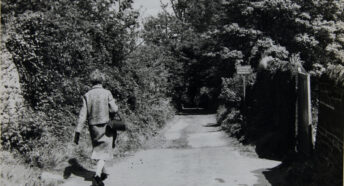Honouring midwinter’s longest night
The longest night falls. Stars salt the inky sky and a cold wind smarts against your skin, bringing the promise of a frosty morning to follow. It’s the winter solstice, and midwinter is here…
What is the winter solstice?
This year the solstice will occur at 9.19am on Saturday 21 December. A 24-hour period marks the longest night and shortest day of the year, but the solstice is actually a pinprick in time, when the sun appears to pause before changing direction (‘solstice’ comes from the Latin solstitium – ‘sun stands still’). From this point onward, the days will gradually lengthen, and the light of the sun will return, bringing hope and strength for the renewal of the year.
Culturally the winter solstice acts as a powerful reminder of renewal, as the sun symbolically dies and is then reborn. As well as connections to Christmas, there are also obvious parallels with 31 December, when we cross the threshold from the old year into a new one.
Customs and celebrations
The winter solstice is a marker point that has long been honoured throughout the world; Stonehenge (which dates back to around 3500 BCE), for instance, aligns with the winter solstice sunset, and today many flock to the stones to celebrate this turning point in the year the following morning. If you don’t want to make the journey, you can even watch the livestream sunrise here!

In ancient British folklore, the winter solstice is connected to the tale of the Holly King and the Oak King, who are said to battle each other twice a year. From the summer solstice in June, the Holly King reigns over the waning half of the year, but in December the Oak King takes back the crown, with the longevity of the oak offering a reminder that we have the strength to make it through the coldest, darkest days of the year.
The pre-Christian festival of Yule is often conflated with the winter solstice, a Scandinavian celebration that included a Yule log, burning fires, singing and tributes to the gods. It’s hard to specify a date for the festival, but it’s thought that the Yuletide period ran from mid-November into January, heralding a time of feasting and celebration.
Customs and traditions of the winter solstice can also be connected to the ancient Roman festival of Saturnalia, which began on 17 December and lasted for seven days. This celebration honoured Saturn, the god of time, agriculture, abundance and good fortune. Full of food, gifts and lighthearted revelry, it’s easy to connect Saturnalia – and Yule, too – with modern celebrations of Christmas, and remnants can also still be see in modern Pagan customs.
How to honour the winter solstice
Connect with the ancient festival of Yule and choose a midwinter log to burn on the solstice. Traditionally this log would have burned throughout the night, but of course with modern stoves and fireplaces, it’s likely to be a little smaller than those of old! Alternatively, if you don’t have a fire, make a Yule cake log instead to enjoy. There are plenty of recipes online, and it’s a great way to get children involved.
Why not make a solstice lantern? Candles and lanterns are traditionally burned on this day as a symbol of the light within us all, and the return of the sun. You might place a candle in a jam jar and cover it with coloured tissue paper, or you could opt for a paper lantern and decorate with colours or fragments of greenery.
For a more fragrant craft, try your hand at making an orange pomander. The orange is symbolic of the sun, so this is an ideal activity to try around the solstice. Find out how to make them here.

One of the simplest ways to honour the winter solstice is to bring evergreens indoors to decorate your home. Opt for holly or yew (a sign of everlasting life), ivy (connected with love and friendship), or, of course, a tree! Find out more about the symbolism of evergreens.
A midwinter reminder
However you choose to mark the winter solstice, don’t forget the important reminder that it offers: although the days are still dark, the temperatures are cold, and it can feel like hope is lost, the light will return, the days will brighten, and a new cycle will begin again.
About the author
Eleanor Cheetham is a writer and teacher based in Lincolnshire, forever inspired by seasonal change and the folklore and stories of the land.









